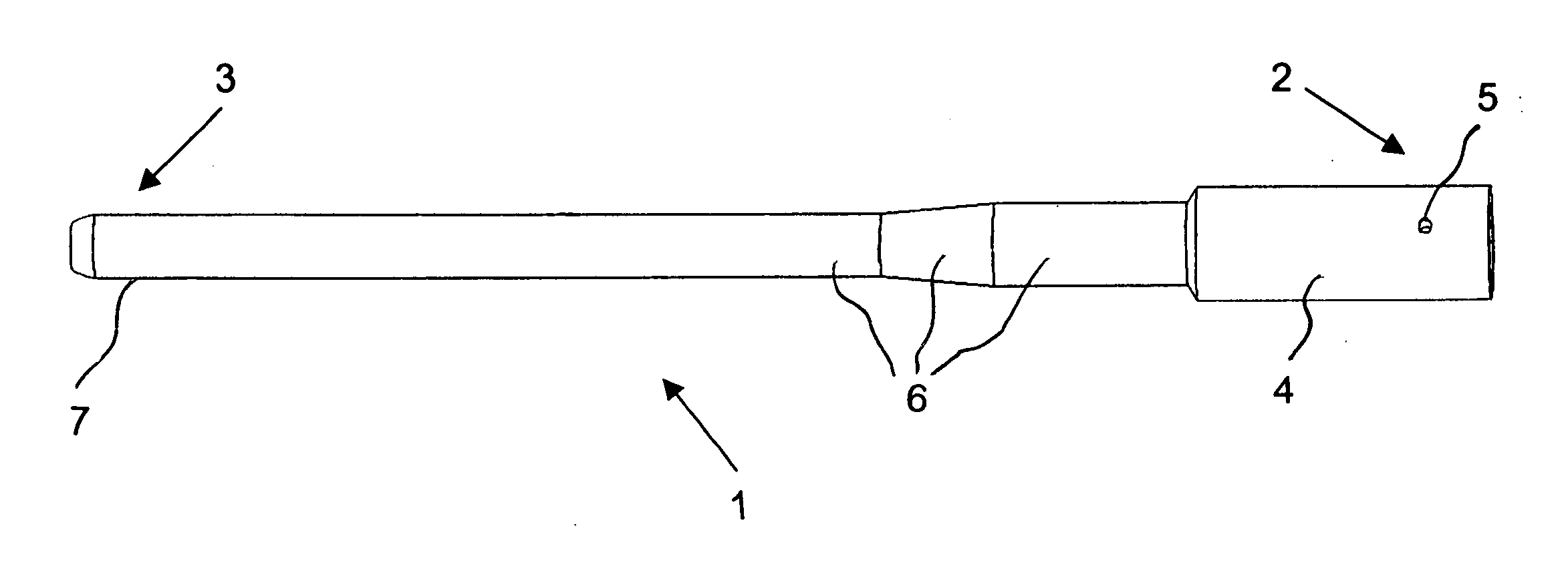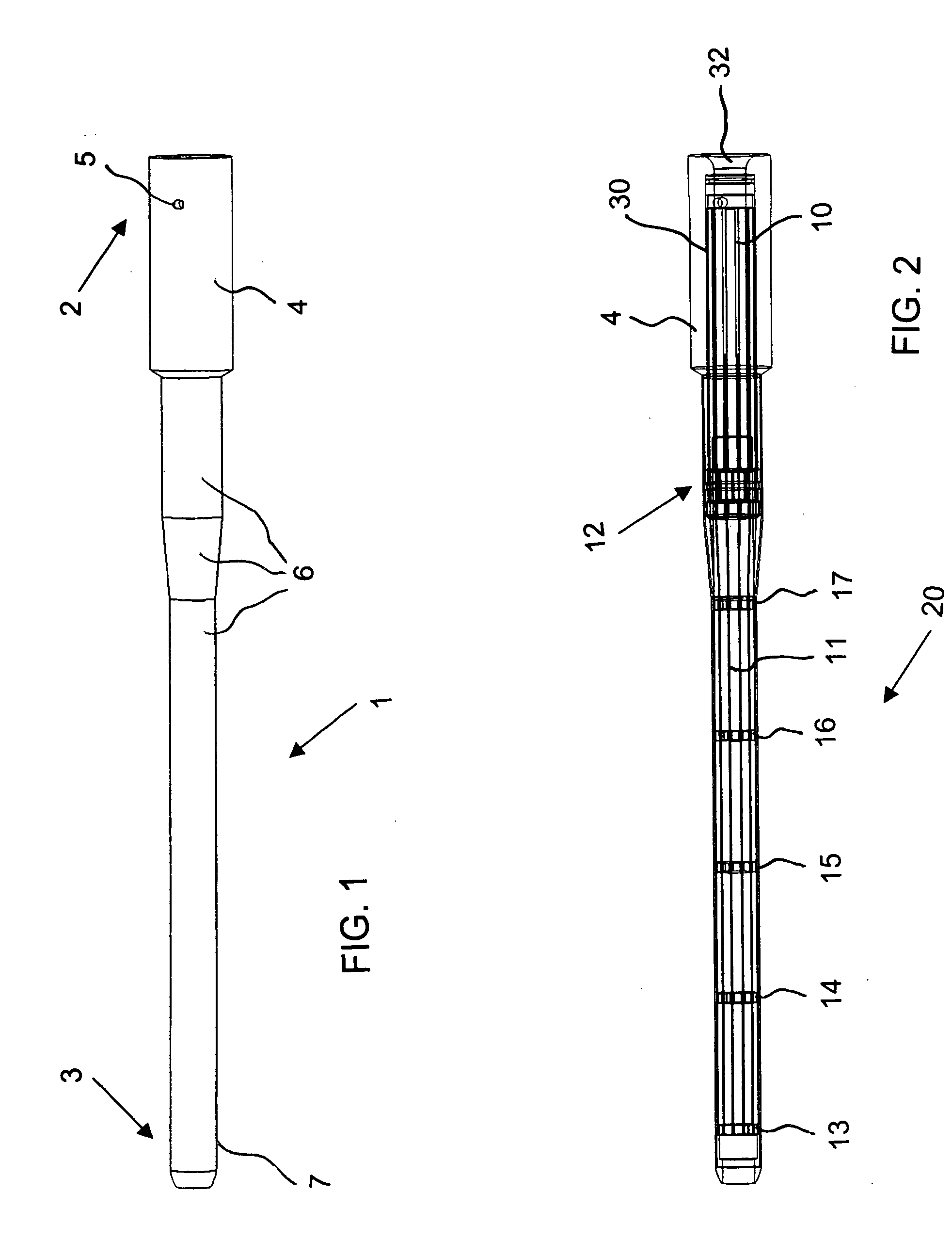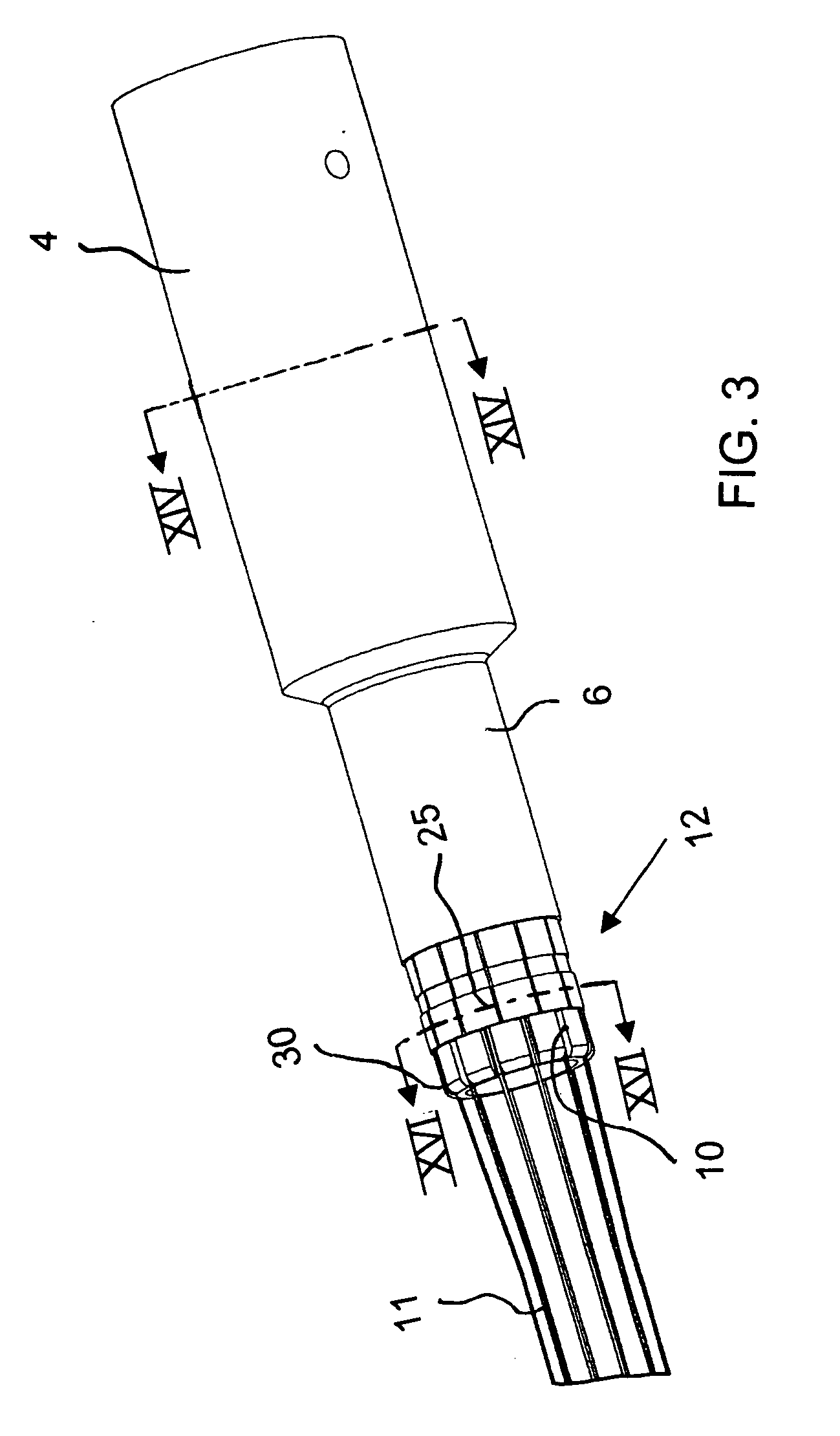Variably flexible insertion device and method for variably flexing an insertion device
- Summary
- Abstract
- Description
- Claims
- Application Information
AI Technical Summary
Benefits of technology
Problems solved by technology
Method used
Image
Examples
Embodiment Construction
[0043] Referring now to the figures of the drawings in detail and first, particularly, to FIG. 1 thereof, there is seen a variably flexible insertion device 1 according to the invention. The insertion device 1 has a hollow body with a proximal end 2 for manipulation by an operator and for receiving an instrument 32 such as an endoscope or colonoscope seen in FIG. 5. The insertion device 1 also has a distal end 3 for insertion into a patient and for protrusion of the instrument 32. An outer handle 4 of the hollow body for the operator is disposed at the proximal end 2. The handle 4 has a vacuum port 5 formed therein. An outer sleeve 6 of the hollow body is disposed between the outer handle 4 and a nose tip 7 of the hollow body at the distal end 3. The outer sleeve 6 provides a flexible section with a given length extending beyond the handle 4.
[0044]FIG. 2 shows that the outer handle 4 contains an inner handle 30 of the hollow body having channel grooves 10 which permit movement of t...
PUM
 Login to View More
Login to View More Abstract
Description
Claims
Application Information
 Login to View More
Login to View More - R&D
- Intellectual Property
- Life Sciences
- Materials
- Tech Scout
- Unparalleled Data Quality
- Higher Quality Content
- 60% Fewer Hallucinations
Browse by: Latest US Patents, China's latest patents, Technical Efficacy Thesaurus, Application Domain, Technology Topic, Popular Technical Reports.
© 2025 PatSnap. All rights reserved.Legal|Privacy policy|Modern Slavery Act Transparency Statement|Sitemap|About US| Contact US: help@patsnap.com



